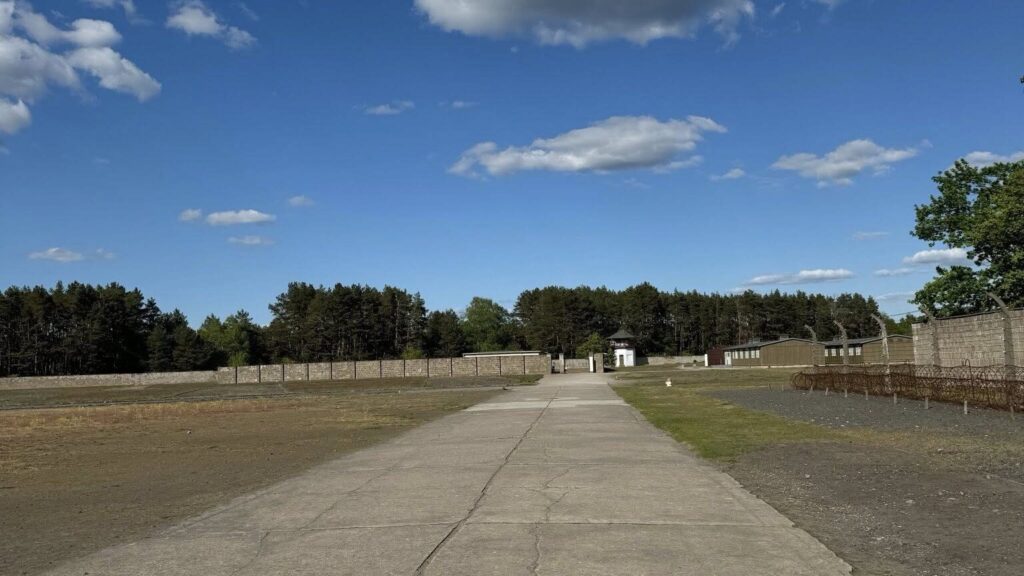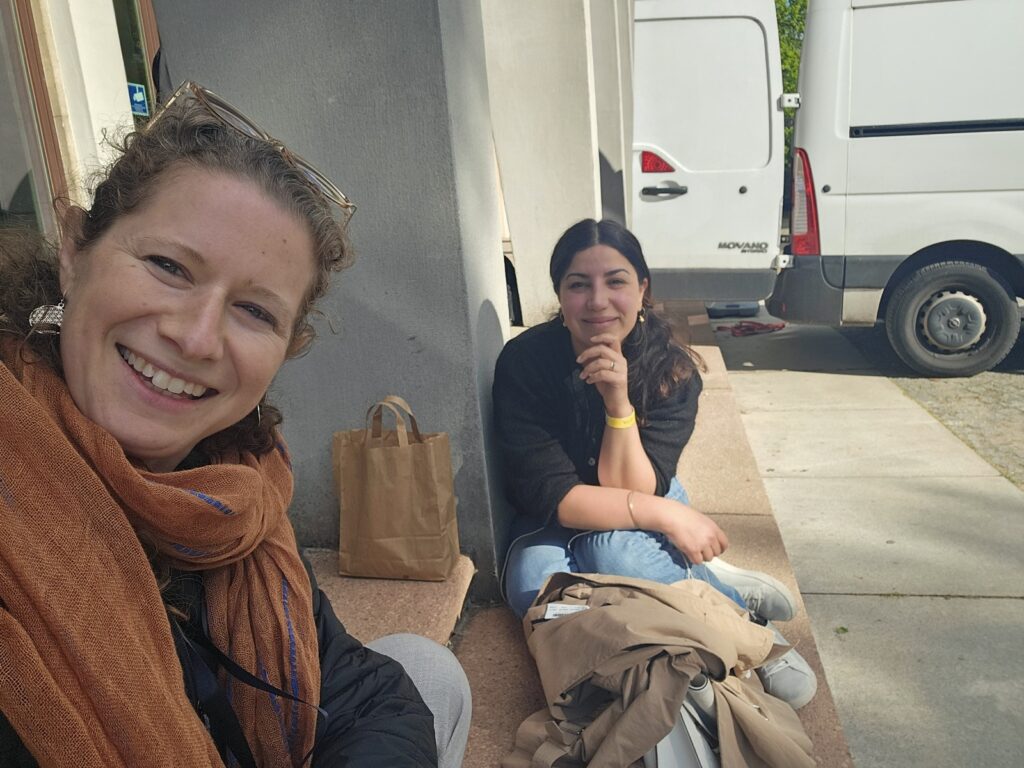I want to share a slightly heavier experience from my week in Berlin, with the Youth4Peace exchange. Youth4Peace brought together 80 young people from 26 different countries from May 3-9, 2005, and I had the pleasure of co-moderating the group. On the third day of the program, after listening to witnesses from current or recent wars, we headed to a visit to Sachsenhausen concentration camp in the afternoon. I used to work in the field of Holocaust Education, so I have been on these visits before, and I spent a lot of time engaging with young people about the story of Anne Frank and the Holocaust.
I didn’t think anything of this visit to Sachsenhausen, and in fact, I thought this would be a visit just for the group, one that perhaps I could even skip and go have a coffee instead. But I realized the expectations were different, so I went along. We started with testimony from Bogdan Bartnikowski, a non-Jewish Polish survivor of the camp, who was 12 years old at the time of his imprisonment. I won’t share all the cruelty, because we have enough stories like that going around right now. But he also shared that in addition to the day of liberation, he had another happy moment in his time there. This was the day that he had to go deliver some material to the women’s side of the camp, where he was briefly reunited with his mother. That memory, that small flicker of light in such a dark place, brought emotion to the whole group — myself included. It felt as though the pain of the past was meeting the pain of the present, and everything was beginning to mix.
We got into groups and entered the camp, and I immediately felt the heaviness. I didn’t want to be there but felt I had an obligation to the group. After some time, my feet just walked me out. I took a little walk in the nearby forest just outside the camp, and it was amazing how just outside the camp was freedom, and just inside was still, so many years later, a feeling of enslavement. I used to walk through camps like these with my Jewish identity front and center — this was the story I had inherited and for a long time carried in my body. But this time felt different. I wasn’t feeling my identity in the same way, but rather the burden of what had happened on this land. It was a kind of shared weight — not just of victimhood, but of human suffering passed down through generations. This is difficult to express, and I know it can be controversial, but I want to try: I felt the burden carried not only by victims, but also — differently — by perpetrators. It wasn’t about assigning blame. It was about the weight of unresolved history, how it imprints itself on all of us, regardless of which “side” we’re on.
I wondered why this hit me now after so many similar visits and experiences with Holocaust stories. Was it because I was now a mom? Was it October 7th and the present painful realities in Gaza and for hostage families? Was it because I had done some ancestral trauma work and could receive this heaviness not a condition of my identity but as an energy to feel through and release?
Whatever the reason, I didn’t feel the need to weaponize that heaviness — to turn it into outrage or slogans. Even the ‘never again’ slogan feels sometimes like an escape out of the heaviness. Committing ourselves to this moral stance makes it somehow easier to bear the burden of the past. But it still keeps the burden alive, entrapping us through identity, defining and confining our place in the world. Identity as a lens is only one of the many ways to see the world.
From the forest, I circled back to the steps just outside the camp and joined a fellow facilitator, who also could not stay inside for more than a few minutes. There we were, two moms, Iranian and Israeli, Muslim and Jewish, but so much more, sharing a moment of light in a deeply heavy place.


